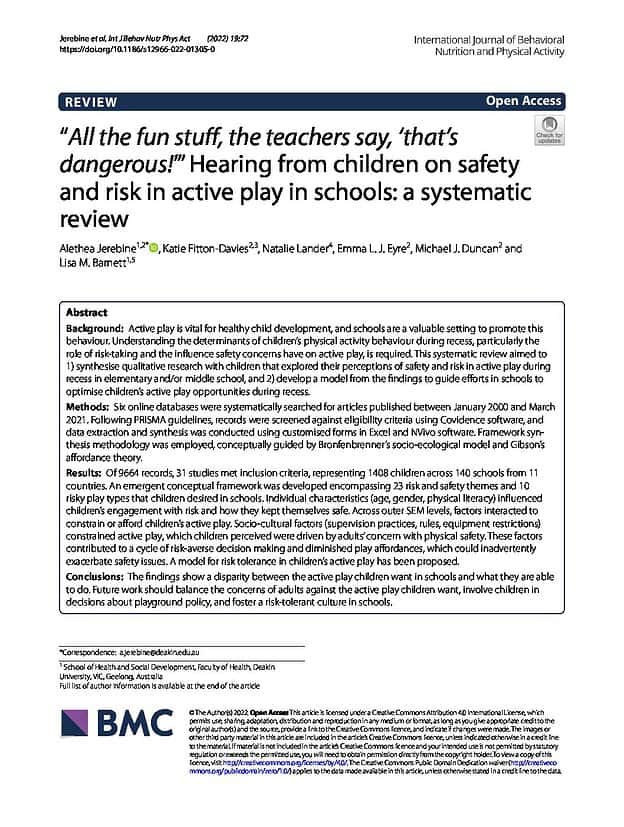Background
Active play is vital for healthy child development, and schools are a valuable setting to promote this behaviour. Understanding the determinants of children’s physical activity behaviour during recess, particularly the role of risk-taking and the influence safety concerns have on active play, is required. This systematic review aimed to 1) synthesise qualitative research with children that explored their perceptions of safety and risk in active play during recess in elementary and/or middle school, and 2) develop a model from the findings to guide efforts in schools to optimise children’s active play opportunities during recess.
Methods
Six online databases were systematically searched for articles published between January 2000 and March 2021. Following PRISMA guidelines, records were screened against eligibility criteria using Covidence software, and data extraction and synthesis was conducted using customised forms in Excel and NVivo software. Framework synthesis methodology was employed, conceptually guided by Bronfenbrenner’s socio-ecological model and Gibson’s affordance theory.
Results
Of 9664 records, 31 studies met inclusion criteria, representing 1408 children across 140 schools from 11 countries. An emergent conceptual framework was developed encompassing 23 risk and safety themes and 10 risky play types that children desired in schools. Individual characteristics (age, gender, physical literacy) influenced children’s engagement with risk and how they kept themselves safe. Across outer SEM levels, factors interacted to constrain or afford children’s active play. Socio-cultural factors (supervision practices, rules, equipment restrictions) constrained active play, which children perceived were driven by adults’ concern with physical safety. These factors contributed to a cycle of risk-averse decision making and diminished play affordances, which could inadvertently exacerbate safety issues. A model for risk tolerance in children’s active play has been proposed.
Conclusions
The findings show a disparity between the active play children want in schools and what they are able to do. Future work should balance the concerns of adults against the active play children want, involve children in decisions about playground policy, and foster a risk-tolerant culture in schools.



Responses